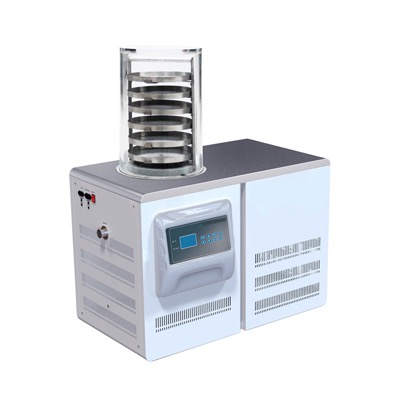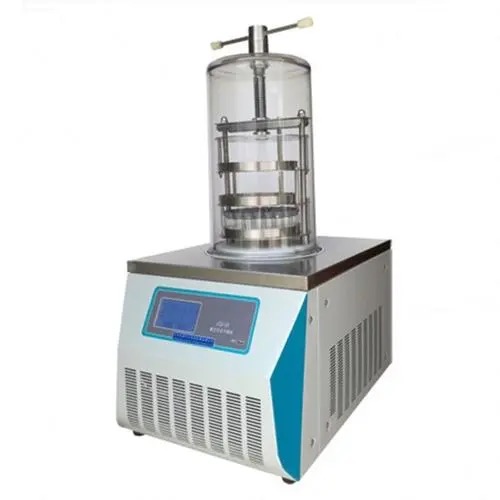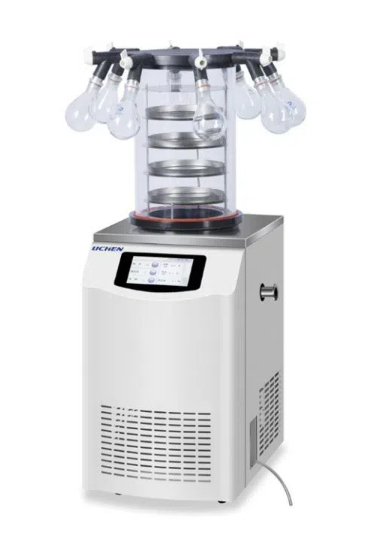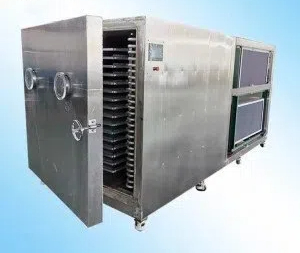
Content Menu
● Introduction to Freeze-Dry Machine Food
● Understanding the Freeze-Drying Process
>> Freeze-Drying vs. Dehydration: Understanding the Difference
● The Booming Freeze-Dried Food Market
>> Factors Driving Market Growth
>> Popular Freeze-Dried Food Categories
● Home Freeze-Drying: Bringing the Technology to Consumers
>> Choosing a Home Freeze-Drying Machine
● Industrial Applications of Freeze-Dry Machine Food Technology
>> Innovations in Industrial Freeze-Drying
● Freeze-Dried Foods for Outdoor Enthusiasts and Emergency Preparedness
>> Benefits for Outdoor Activities
>> Emergency Food Storage Solutions
● The Future of Freeze-Dry Machine Food Technology
>> Challenges and Opportunities
● Conclusion
● Frequently Asked Questions
>> 1. What is the shelf life of freeze-dried food?
>> 2. How does freeze-drying affect the nutritional value of food?
>> 3. Can all types of food be freeze-dried?
>> 4. How do you rehydrate freeze-dried food?
>> 5. Are home freeze-dryers worth the investment?
Introduction to Freeze-Dry Machine Food
In recent years, the food industry has witnessed a remarkable transformation with the rise of freeze-dry machine food technology. This innovative method of food preservation has gained significant traction, revolutionizing how we approach long-term food storage, convenience, and nutrition retention. As we delve into the world of freeze-dry machine food, we'll explore its impact on various sectors, from home kitchens to industrial applications, and understand why it's becoming a game-changer in the global food market.
Understanding the Freeze-Drying Process
Freeze-drying, also known as lyophilization, is a sophisticated process that removes moisture from food while preserving its structure and nutritional content. The process involves three main steps:
1. Freezing: The food is rapidly frozen to lock in its structure and nutrients.
2. Primary drying: The frozen food is placed in a vacuum chamber where the ice is sublimated directly into vapor.
3. Secondary drying: Any remaining moisture is removed through desorption.
This process results in a product that maintains its original shape, color, and most importantly, its nutritional value. The absence of water also significantly extends the shelf life of the food, making it an ideal solution for long-term storage.
Freeze-Drying vs. Dehydration: Understanding the Difference
While both freeze-drying and dehydration aim to remove moisture from food, they differ significantly in their processes and outcomes. Dehydration uses heat to evaporate water, which can lead to changes in texture, flavor, and nutritional content. Freeze-drying, on the other hand, preserves the food's original qualities much more effectively.
Freeze-dried foods retain up to 97% of their original nutritional value, compared to the 60% retention in dehydrated foods. This significant difference in nutrient retention makes freeze-dried foods a superior choice for those seeking to maintain the highest nutritional quality in their preserved foods.

The Booming Freeze-Dried Food Market
The global freeze-dried food market has been experiencing exponential growth, driven by increasing consumer demand for convenient, nutritious, and long-lasting food options. Market research indicates that the freeze-dried food market is projected to reach USD 55.9 billion by 2034, growing at a CAGR of 6.3% from 2024 to 2034.
Factors Driving Market Growth
Several factors contribute to the rapid expansion of the freeze-dried food market:
1. Increasing awareness of food preservation techniques
2. Growing demand for convenient and ready-to-eat meals
3. Rising interest in outdoor activities and emergency preparedness
4. Advancements in freeze-drying technology
5. Expanding applications in various industries, including pharmaceuticals and biotechnology
Popular Freeze-Dried Food Categories
The market offers a wide range of freeze-dried products, catering to diverse consumer needs:
1. Fruits and Vegetables: Maintaining their natural flavors and nutritional benefits, these make for healthy snacks and cooking ingredients.
2. Meats and Seafood: Providing protein-rich options for outdoor enthusiasts and emergency food supplies.
3. Beverages: Including coffee, tea, and juice powders that reconstitute quickly.
4. Complete Meals: Offering convenience for campers, hikers, and busy professionals.
5. Pet Food: Providing nutritious and long-lasting options for pet owners.
Home Freeze-Drying: Bringing the Technology to Consumers
As the popularity of freeze-dried foods grows, so does the interest in home freeze-drying equipment. These machines allow consumers to create their own freeze-dried foods, offering several benefits:
1. Cost savings on premium freeze-dried products
2. Control over ingredients and portion sizes
3. Reduction of food waste by preserving excess produce
4. Customization of meals and snacks for specific dietary needs
Choosing a Home Freeze-Drying Machine
When selecting a home freeze-drying machine, consumers should consider several factors:
1. Capacity: Determine how much food you plan to freeze-dry at once.
2. Energy efficiency: Look for models with lower power consumption.
3. Ease of use: User-friendly interfaces and clear instructions are crucial.
4. Durability: Invest in a machine built to last with quality components.
5. Warranty and support: Ensure the manufacturer offers reliable customer service.

Industrial Applications of Freeze-Dry Machine Food Technology
While home freeze-drying is gaining popularity, industrial freeze-drying machines continue to dominate the market. These large-scale operations cater to various industries, including:
1. Food and Beverage: Producing freeze-dried ingredients and ready-to-eat meals.
2. Pharmaceuticals: Preserving sensitive medications and vaccines.
3. Biotechnology: Stabilizing biological samples for research and diagnostics.
4. Nutraceuticals: Creating shelf-stable supplements and functional foods.
Industrial freeze-drying equipment offers higher capacity and efficiency, allowing for mass production of freeze-dried products. The food industry, in particular, has seen significant advancements in freeze-drying technology, with continuous freeze-drying systems becoming more prevalent.
Innovations in Industrial Freeze-Drying
Recent innovations in industrial freeze-drying technology include:
1. Microwave-assisted freeze-drying: Reducing processing time and energy consumption.
2. Continuous freeze-drying systems: Improving efficiency for large-scale production.
3. Smart monitoring systems: Enhancing quality control and process optimization.
4. Eco-friendly refrigerants: Minimizing environmental impact.
These advancements are driving the growth of the food industry freeze-drying equipment market, which is expected to see substantial expansion in the coming years.
Freeze-Dried Foods for Outdoor Enthusiasts and Emergency Preparedness
One of the most significant markets for freeze-dried foods is the outdoor recreation and emergency preparedness sector. Hikers, campers, and survivalists appreciate the lightweight, compact, and nutritious nature of freeze-dried meals.
Benefits for Outdoor Activities
1. Lightweight: Freeze-dried foods are significantly lighter than their hydrated counterparts.
2. Long shelf life: Perfect for extended trips or emergency kits.
3. Nutritional integrity: Maintains essential vitamins and minerals.
4. Variety: Wide range of meals and ingredients available.
5. Easy preparation: Simply add water to reconstitute.
Emergency Food Storage Solutions
Freeze-dried foods play a crucial role in emergency preparedness:
1. Long-term storage: Many freeze-dried foods can last up to 25 years when properly stored.
2. Nutritional completeness: Provides balanced meals during emergencies.
3. Space-efficient: Compact packaging allows for storing more food in limited spaces.
4. Taste and texture: Retains much of the original food's qualities upon rehydration.
The Future of Freeze-Dry Machine Food Technology
As we look to the future, the freeze-dry machine food industry is poised for continued growth and innovation. Several trends are shaping the future of this technology:
1. Sustainable packaging: Development of eco-friendly packaging solutions for freeze-dried products.
2. Novel food applications: Exploration of new food categories suitable for freeze-drying.
3. Enhanced flavor technologies: Improving taste and texture of reconstituted freeze-dried foods.
4. Integration with smart home devices: Connecting freeze-dryers with home automation systems.
5. Personalized nutrition: Tailoring freeze-dried meals to individual dietary needs and preferences.
Challenges and Opportunities
While the freeze-dry machine food industry faces challenges such as high initial equipment costs and energy consumption, these also present opportunities for innovation. Researchers and manufacturers are working on developing more energy-efficient processes and reducing the cost of freeze-drying equipment to make it more accessible to a broader market.
Conclusion
The freeze-dry machine food revolution is transforming the way we think about food preservation, storage, and consumption. From home kitchens to industrial facilities, the technology is opening up new possibilities for creating nutritious, long-lasting, and convenient food options. As the market continues to grow and evolve, we can expect to see even more innovative applications and improvements in freeze-drying technology, further cementing its place as a cornerstone of modern food preservation.

Frequently Asked Questions
1. What is the shelf life of freeze-dried food?
Answer: The shelf life of freeze-dried food can vary depending on the specific product and storage conditions. Generally, properly stored freeze-dried foods can last anywhere from 5 to 25 years. Some manufacturers even claim that certain freeze-dried products can last up to 30 years when stored in optimal conditions.
2. How does freeze-drying affect the nutritional value of food?
Answer: Freeze-drying is one of the best methods for preserving the nutritional value of food. The process can retain up to 97% of the original nutritional content, including vitamins, minerals, and enzymes. This is because the low-temperature process and absence of liquid water minimize chemical reactions that could degrade nutrients.
3. Can all types of food be freeze-dried?
Answer: While many foods can be freeze-dried, some are more suitable than others. Foods with high water content, such as fruits, vegetables, meats, and dairy products, are excellent candidates for freeze-drying. However, foods with high fat content may not freeze-dry well, as fats can become rancid over time. Additionally, some foods with delicate structures may not maintain their texture after reconstitution.
4. How do you rehydrate freeze-dried food?
Answer: Rehydrating freeze-dried food is typically a simple process. Most freeze-dried foods can be reconstituted by adding warm or hot water. The amount of water and time required for rehydration can vary depending on the food item. Generally, you'll want to add water until the food reaches its original consistency. Some foods may rehydrate almost instantly, while others might take 5-10 minutes.
5. Are home freeze-dryers worth the investment?
Answer: The value of a home freeze-dryer depends on individual circumstances and needs. For those who frequently purchase freeze-dried foods, grow their own produce, or want to have control over their long-term food storage, a home freeze-dryer can be a worthwhile investment. It allows for customization of meals, reduction of food waste, and potential long-term cost savings. However, the initial cost of the equipment is significant, and it requires time and energy to operate. Potential buyers should carefully consider their usage patterns and budget before making the investment.












